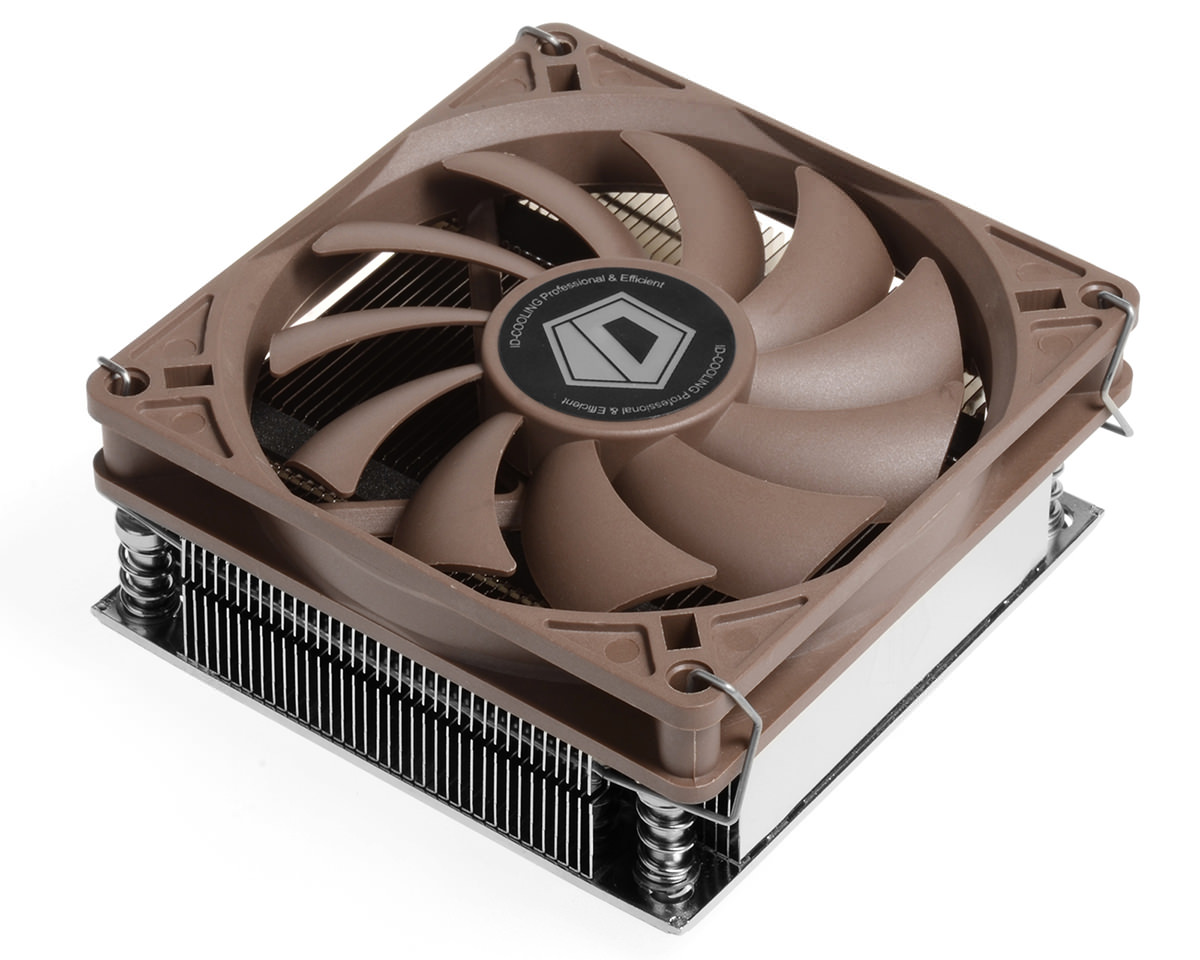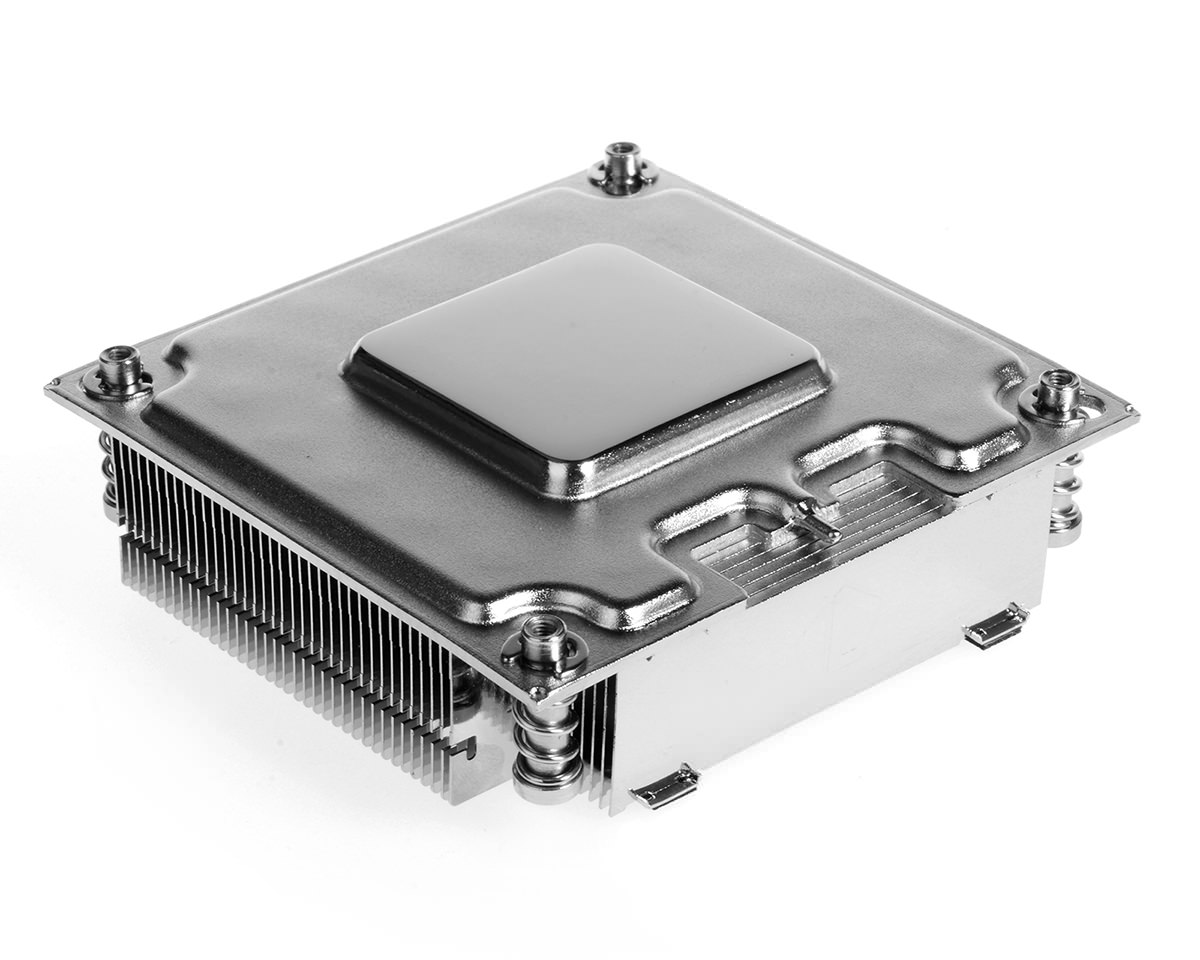ID-Cooling Builds Mini-ITX CPU Cooler With Vapor Chamber
ID-Cooling has a CPU cooler with a vapor chamber built in. That's not something you see every day.
The folks over at ID-Cooling have been working on a CPU cooler that uses a vapor chamber to draw heat away from the CPU. The CPU cooler is called the IS-VC45 and has a rather simple design.
The vapor chamber at the bottom of the cooler is welded to a handful of aluminum fins, and that's it. On top of those rests a slim 92 mm fan, and the entire construction is about 4 cm thick. Despite that, thanks to the vapor chamber, ID-Cooling stated that the unit is capable of dissipating heat coming from CPUs with TDP's of up to 130 W. For something this small, that's a tremendous amount of cooling power.
For comparison, the most powerful Intel CPU that you can put in a Mini-ITX system, which is what the cooler is geared at, is the Intel Core i7-4790K. This chip has a TDP of 88 W, meaning that all things being equal, you'll even have some cooling headroom left so that the CPU can run a little faster than its 4.0 GHz base frequency.
The fan on this unit will spin at speeds between 600 RPM and 2500 RPM, and they use a fluid dynamic bearing. ID-Cooling did not give information on the noise the fans will produce.
For larger systems, a CPU cooler with a vapor chamber simply doesn't make sense, which is almost certainly why we haven't seen very many of them. For smaller systems, however, where you cannot install large CPU coolers or water cooling loops, you need all the cooling power you can get in the smallest possible form factor.
The sticker price for this cooler isn't bad either, with ID-Cooling giving it an MSRP of $44.99. For comparison, Noctua's NH-L9i, which is a premium CPU cooler with almost identical dimensions, goes for $44.99 on Newegg.com but is only capable of dissipating up to 65 W for typical Haswell builds. There's no word yet on availability.
Follow Niels Broekhuijsen @NBroekhuijsen. Follow us @tomshardware, on Facebook and on Google+.
Get Tom's Hardware's best news and in-depth reviews, straight to your inbox.
Niels Broekhuijsen is a Contributing Writer for Tom's Hardware US. He reviews cases, water cooling and pc builds.
-
Staticisgood I would love to see some hands on tests. This could very well be the cooler I was looking for to keep my next build a mini powhouse!Reply -
knowom Wait why doesn't this make sense for larger systems if it cools that well why not make a full tower design of one of these. Hell one of these in a full tower design could probably take passive cooling into new league of it's own.Reply -
InvalidError Reply
A full tower design would not give much added benefit to a flat vapor chamber directly over the CPU since most of the heat would already be dissipated in the first few centimeters off the fin base. If you want to propagate heat through a large fin stack, you need heat pipes of some sort.15103370 said:Wait why doesn't this make sense for larger systems if it cools that well why not make a full tower design of one of these. Hell one of these in a full tower design could probably take passive cooling into new league of it's own. -
superstition I don't see why it's not possible to use heatpipes with a vapor chamber, or larger fins to dissipate the heat.Reply
Moreover, the most efficient design would be for a motherboard that has a single vapor chamber over the CPU, the GPU(s), and the chipset. Since Intel isn't very interested in innovating in the desktop enthusiast space, though, we won't see anything like that soon. -
superstition Specifically, I think there should be a motherboard design that lets people install GPUs as chips just as they install CPUs. GPU RAM would also be user-installed. The motherboard would handle all the power regulation and everything would be cooled by a single vapor chamber and large fan. (A secondary fan could be used, of course, to cool a hard disk stack.)Reply
It is extremely inefficient to use the ATX design for high wattage parts -- with things like GPU cards sticking out in odd directions. -
InvalidError Reply
A vapor chamber is just a special case of heat pipe. Both are based on the same fundamental principle of trapping a phase-changing material between heated and cooled surfaces so one surface boils it off while the other condenses it back to liquid. Having both would be redundant and less effective in most cases since you are reducing the temperature gradient required to make the convection and phase-changing happen efficiently.15103639 said:I don't see why it's not possible to use heatpipes with a vapor chamber, or larger fins to dissipate the heat. -
superstition http://www.tomshardware.com/news/cooler-master-3d-vapor-chamber,28372.htmlReply
"As the CPU heats the liquid in the vapor chamber, the liquid ensures that it is dissipated evenly to the copper heat pipes, thus eliminating hot spots and ensuring better cooling.
Cooler Master has taken the concept to the next level by effectively making the heat pipes part of the actual vapor chamber. Instead of laying on top of the vapor chamber, the heat pipes are connected to it." -
aldaia Flat vapor chambers in combination with heat pipes have been used for a while. For instance the Cooler Master V4 GTS (circa 2012) uses both. Horizontal Vapor Chamber minimizes CPU hotspots and spreads heat evenly to all heatpipes while Heatpipe Array quickly removes heat from the Vapor Chamber.Reply
3D vapor chamber is a refinement where both are integrated into a single component for (hopefully) better efficiency. -
aldaia Reply15103604 said:
A full tower design would not give much added benefit to a flat vapor chamber directly over the CPU since most of the heat would already be dissipated in the first few centimeters off the fin base. If you want to propagate heat through a large fin stack, you need heat pipes of some sort.15103370 said:Wait why doesn't this make sense for larger systems if it cools that well why not make a full tower design of one of these. Hell one of these in a full tower design could probably take passive cooling into new league of it's own.
Actually it has been done. Cooler Master TPC 812 and TPC 612 both use the concept of "vertical vapor chamber". It's a elongated rectangular vapor chamber where both sides are bended up and run up through the fins.
Vapor chambers are also used a lot in GPUs since you have a lot of flat area but very short fins (GPUs must fit in a few cms)


